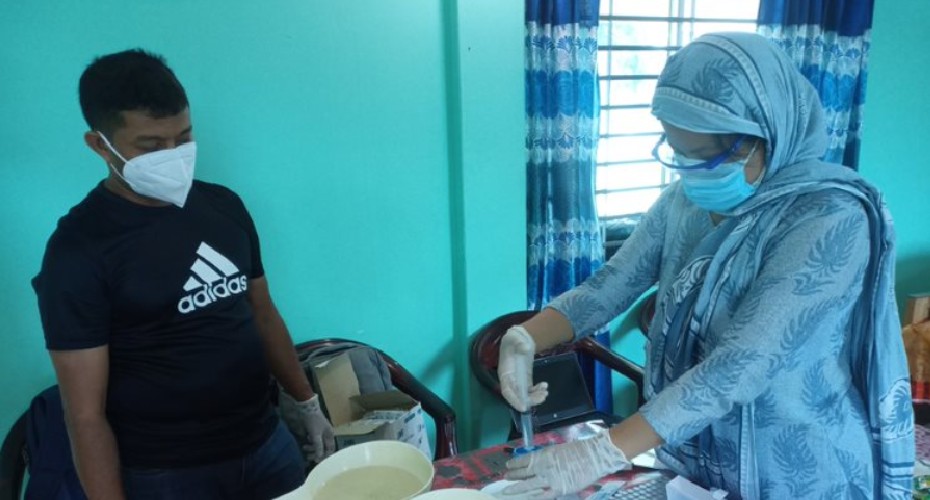
Our digital tools will be released through a social media campaign in 2022. We will collect data on the reach and interest in this, both within Bangladesh and globally.
We would be happy to discuss our project further. Please contact the UK or Bangladesh team:
Dr Kelly Thornber, University of Exeter, UK:
k.thornber@exeter.ac.uk
Dr Md Meezanur Rahman, WorldFish, Bangladesh:
Muhammad.Rahman@cgiar.org
Biosecurity data collection
Throughout the project we have collected a range of data to help us understand shrimp hatchery biosecurity and how we could help improve this. The results will be published in a peer-reviewed journal and made available here when ready.
Current biosecurity practices and attitudes
At the beginning of our project we collected this data to understand the general level of biosecurity practice and attitudes towards biosecurity across the hatchery sector. This identified a strong need for biosecurity training, and highlighted external issues that pose additional challenges to hatchery biosecurity, namely the limited availability of healthy broodstock (breeding adults, captured from the Bay of Bengal), and deteriorating quality of water sources. As a result, we obtained further funding to carry out situational analysis reports on both of these topics (see Industry Sustainability Reports page).
Sample analysis
We collected samples from different stages of the hatchery process, and tested them for the presence of the pathogens that cause the most common diseases within the Bangladesh shrimp industry. This has allowed us to identify which areas pose particular risks to hatcheries, in terms of pathogen levels.
Economic data
Our initial data on biosecurity attitudes suggested that increased productivity and profit are likely to be the main incentives for hatcheries to improve their biosecurity. We then collected information from hatcheries on the costs associated with biosecurity, and to assess whether hatcheries with better biosecurity have greater profit margins.
Video feedback
Throughout our training videos we have included messaging around low-cost, effective ways to improve hatchery biosecurity, using the knowledge and experience of our team. Before the widespread release of these videos via a social media campaign, we interviewed hatchery staff to collect their feedback on how accessible and acceptable the messages were. This provided further information on where future interventions could be best placed.


